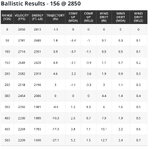That has nothing to do with zeroing a rifle. If you are holding for wind while zeroing a scope, I certainly hope you are extremely good at calling wind, or your scope won't be zeroed poa/poi. That's the point.The advice I was given is to not feel at the mercy of wind - adjust for it at every shot at every distance, but to stop avoiding the range on windy days, and to avoid believing an accurate group can‘t be shot at the range. If a shooter can’t adjust for wind well enough under no stress, unlimited time, wind flags, wind deflection chart to refer to, kestrel, and perfect rest, then effective range is quite short when all those are taken away.
I purposefully shoot in wind. But I also zero my rifle at 100yds, so regardless of wind it's zeroed.


